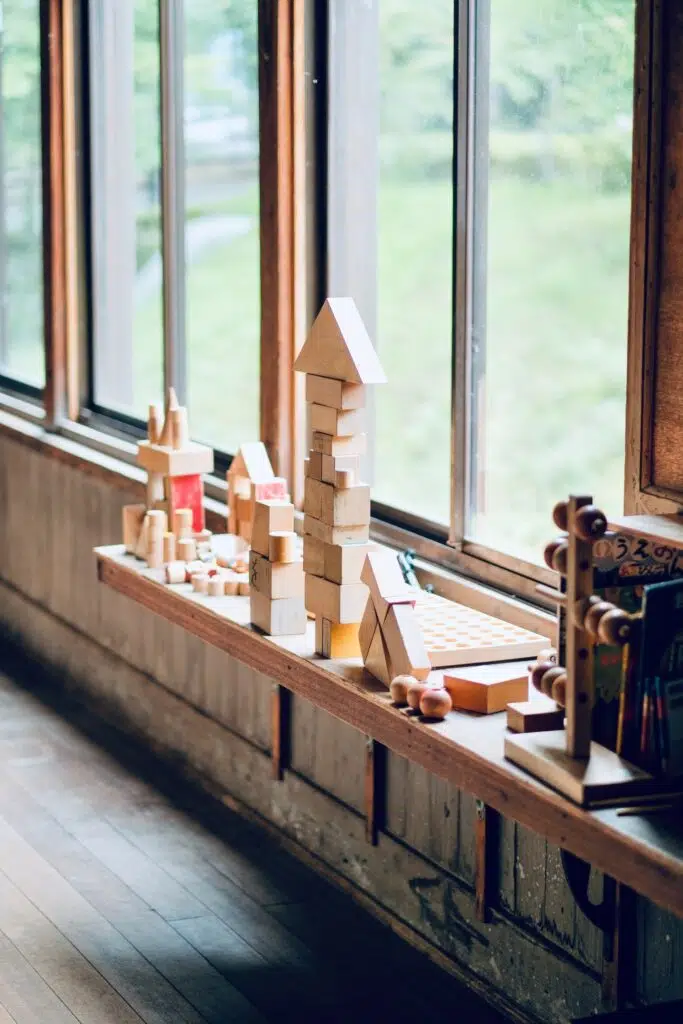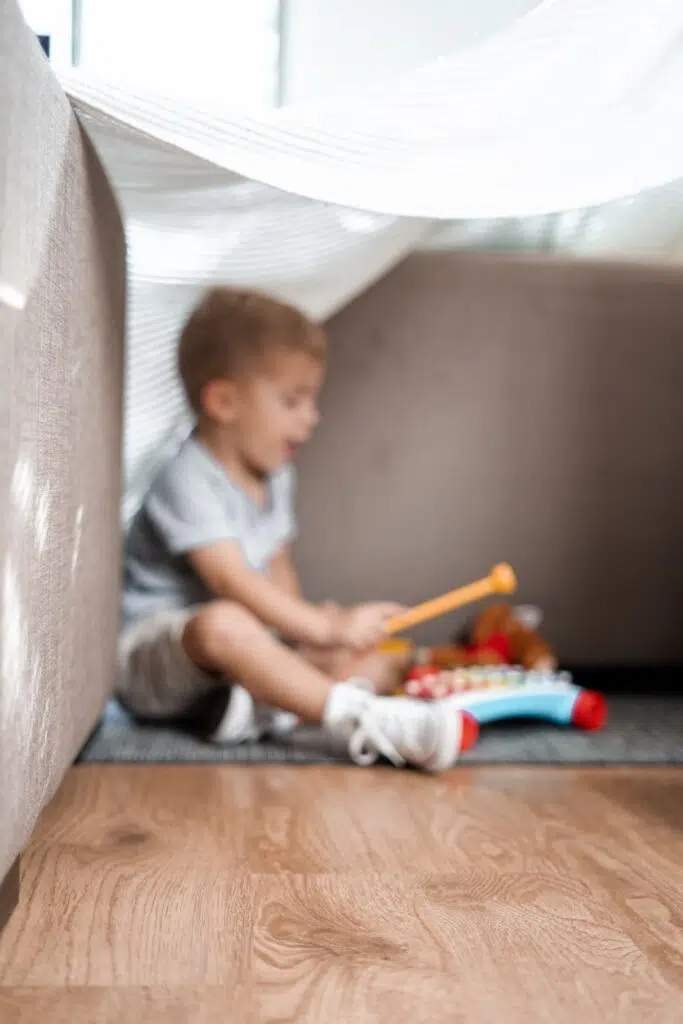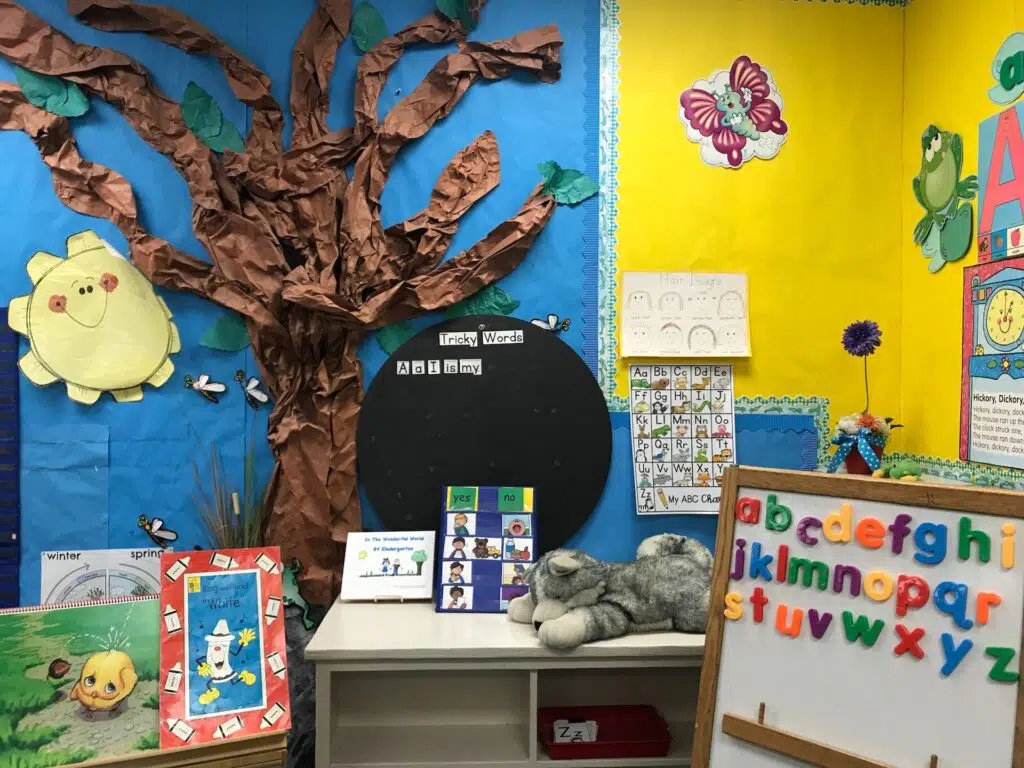An Infinite Number of Open-Ended Play Ideas
If you are wondering what open-ended play is, put simply, it means that children are allowed the time and space to play with resources, following their own creative ideas and interests.
In open-ended play, there is generally no pressure or expectation of an end result or product.
Sometimes, this is described as a process versus outcome. It is all about children having the time and the space to explore a process as they play and learn, rather than having to work towards producing something.
Our courses Project Loose Parts, Outdoors on a Budget, and Urban Forest Environments help foster open-ended play. Check them out today!
Think of the work and journey of a great artist. When they are learning about their craft, they take the time to make many, varying sketches, they learn how to blend colors to find the best possible shades, they look at their subject from different angles and perspectives, and they try out different brush strokes and techniques. They may look at other great artists for inspiration but in the early years of study they are working on the process, learning without pressure to produce a finished masterpiece. This is a good metaphor for open-ended play.
A Teacher or Guide is Important for Open-Ended Play
A good teacher or facilitator is key to this process. A key adult who knows how to provide the right materials, when to step back and let the children practice, when to intervene with new ideas or prompts and when to let the children find out for themselves through a process of trial and error.
This is exactly what our young children need. Time and space to actively play, follow their imaginations and be as creative and experimental as they can possibly be. However, this should not be thought of as a free-for-all. Children still need adults around to set up an enabling environment where there are enough of the right resources to allow skills to develop. Adults should be able to step in when help is required and to step back when children are engaged and learning on their own.
There is well-documented evidence that recently, employers are dissatisfied with recent school graduates who have been taught so rigidly, they are unable to use any initiative, think creatively or use common sense. This is largely because we haven’t allowed those children the opportunities to take part in open-ended activities where they can explore and experiment with new ideas, developing confidence to have a go at anything.
If you want to learn more, check out more information on open-ended play at home.
To develop our children fully, to make sure they grow and learn with confidence, creativity, wonder and problem-solving skills, you can start to use this approach easily by following the ideas below.
Some Open-Ended Play Ideas
All of the following ideas can be adapted to suit different spaces, both indoors and outdoors. Use your own creativity to adapt the ideas and resources and you will soon be seeing your children blossom with creativity and inquiry and enthusiasm.
Builder’s yard play

What you need:
- A large amount of good quality wooden blocks
- A large space.
- Containers to store the blocks.
A good quality set of blocks is one of the most open-ended resources you can provide. If you invest in a good amount of 3D blocks like the sets available from community playthings, for example, you will have a resource that lasts for years. Polished wooden blocks can be expensive but they are well worth the investment. Here are some of my favorite block sets:
Melissa & Doug’s Solid Wood Blocks
Haba Basic Set of Building Blocks
However, if you can’t afford to buy a set of ready-made blocks, there are lots more inexpensive ways of adding resources to your builder’s yard:
- Firstly, collect as many boxes as you can (cardboard boxes – put all those Amazon boxes to use, gift boxes, or anything else. Find as many shapes and sizes as possible!)
- Then add tubes. Things like: pringle containers, foil interior cardboard tubes, the interior tube of masking tape and or wrapping paper, and large carpet tubes. Again, try to collect as many different sizes as possible.
- If you are using cardboard building materials rather than wooden blocks, you will need to add joining materials to your area such as masking tape, string, or other tape
Many children still love block play when they have long passed kindergarten. This is the space where our future architects, town planners, mathematicians and surveyors can all develop their thinking skills!
There are an abundance of mathematical skills inherent in block play, for example:
- 2D shape and 3D shape recognition,
- Symmetry
- Area
- Sorting and matching
- Non-standard and standard measures
Prompts for builder open-ended play
If you want to, you can add prompts or “provocations” to lead the children’s play in a particular direction, such as pictures of interesting buildings like churches, skyscrapers, mosques, or palaces. But remember – these are prompts. If the children come to the builder’s yard with their own plan to build something else, always go with their interests first.
In this area, you will see children measuring one block against another and matching blocks to find the right shapes. They will inevitably make mistakes and buildings will come tumbling down, but this is all part of the learning process. If the play seems to have come to a dead end, you can suggest ideas, and help children to think of new ideas, but be careful not to lead the play. There is so much to learn in the process of building without the pressure of producing a finished model. And if they do create a fabulous model – what a bonus!
Artist area
Young children have the most amazing imaginations when they are given the time and space to use them. I don’t believe we ever grow out of being creative. We might not have used the creative part of our brains for a while, it but it is still buried within us, waiting for the right opportunity. Open-ended opportunities for art never fail to amaze me with what the children are capable of thinking up and producing.
What you will need:
- Paintbrushes: thin, thick, paste brush, scrubbing brush, nail brush
- Papers: various sizes, different colored paper, different textured papers (card, foil, tissue, sugar)
- Paint: ready mix or powder paint, black, white, and primary colors.
- Tubs of Water for mixing
- Easel and a table with a flat surface.
- Aprons
This is the area that traditionally, we most love to see a finished product so you may have to remind yourself about the benefits of open-ended play a few times. We may also sometimes feel pressure from parents to have a finished picture to take home at the end of the session, but if we are truly provided open-ended play opportunities, that may not always be possible. Try to explain to your parents that the children are in the process of learning and it is better for them to try out ideas, experiment, and be truly creative than to paint a template. I like to display the quote below to remind me why we use an open-ended approach.
If you cut it, draw it, or make it for me,
the only thing I learn is that you can do it better than me.
Most children like to make random marks when they first begin painting and then quickly move on to covering the whole of the paper. They may also want to paint their own hands. This is a stage of development and is all part of the learning process. It’s messy, of course, but children often have a physical need to do it so go with it… let them experiment.
Allow children to make their own choices about paper, paint, and brushes. This builds confidence. Let them experiment and explore. If something isn’t working too well, or a child is getting frustrated you can intervene and make suggestions, but otherwise, try to let the child play and create themselves.
Prompts for Art Open-Ended Play
You may want to add photographs or pictures for inspiration. For example, you could add pictures of rainbows or sunsets, or maybe something the children are interested in, but if they choose to paint their own creations, if you are following an open-ended approach, that is enough.
Writers Corner
This is the area where children develop their mark-making and writing skills. You may find that this area isn’t as popular as other areas of play, especially with younger boys, but that is fine. Continue to provide the materials and let the children experiment and explore with the writing process. They can also take the writing materials to other areas if they need to.
What you need:
- Pot of pencils
- Pot of pens
- Pot of crayons
- Glue stick
- Scissors
- Scotch tape
- Paper
- Envelopes
- An alphabet freeze / letter wheel / alphabet strips.
- Clipboards
- Post-it notes
- Note pads / diaries / lists
Depending on which stage your children are at, this area can need replenishing regularly and it can get costly as some children may make lots of random marks and scribbles at first. If you find you are getting through a lot of paper, use recycled envelopes and paper wherever possible. Ask around for donations of junk mail or old cards and recycle them by adding them to your area. A writer’s corner should be all about exploration and experimentation. Allow the children to write and draw in any way they choose without restrictions.
Prompts for Writing Open-Ended Play
Invitations, real letters, cards, shopping lists, recipes, old typewriters, or keyboards.
If you have children who don’t choose this area, it is sometimes worth placing an adult in the area to model real writing. Not all children see this skill in practice anymore as parents tend to use their phones for everything. They may never have seen an adult use a pen to write a letter or draw a picture. Once you have shown them what the process of writing actually looks like, step back and let them explore the process for themselves.
Small world
This is the area for all budding storytellers, writers, and future creatives like advertisers and animators. Children should be able to literary build their own world in this area.
You will need:
- A good floor space
- A low table
- Several boxes
- Large pieces of colored fabric
- Baskets or boxes containing:
- Toy figures (fantasy and real life)
- Toy animals (farm, zoo, pet, fantasy)
- Props (toy trees, a few cars, fences, pebbles, childproof mirrors
- A selection of 3D wooden blocks
Set up the area by placing a few boxes on the low table and on the floor and then covering them loosely with fabric to create mountains and lowlands as a backdrop for a world.
Some children may choose this area to retell a favorite story, others may create their own world from scratch. Children generally play out whatever they need to so if they are repeating a story, it will be because they need to. Repetition is important for young children to consolidate new ideas. Try not to steer the play in the direction you think it should go. Let the children lead the story. It doesn’t matter if it doesn’t always follow the traditional conventions of a story. Some children may need to tell a story about something that is happening in their life at the moment. Try and tune in, and play alongside without your own ideas dominating the play if you can. This is a lot more difficult in practice than it sounds. We are all conditioned to tell stories with certain conventions and have expectations about beginnings, middle, and ends, but if you let the children be truly creative, they will come up with some amazing ideas of their own. I promise.
Prompts for “Small World” Open-Ended Play
- Add some favorite story books to the areas.
- Add a few drops of essential oil like lavender for a sensory play experience.
- Add soothing background music.
- Add finger puppets
By providing plenty of interesting resources and allowing the children to make choices, they will be inventing and creating in no time.
Music and movement

All young children need to move and be physical every day. It is a crucial part of their development and essential for their wellbeing.
Providing a music and movement area will develop skills of creativity, flexibility, agility, working together, listening skills, pattern and rhythm skills and that’s just for starters! Think future dancers, singers, athletes, and even songwriters.
You will need:
- A good space
- Percussion instruments
- Ribbon sticks
- Some mats
- Floaty scarves
- Beanbags
- A music source (I-pod / tape recorder)
It’s amazing how creative young children can be with their bodies. They don’t have the same inhibitions as us and can really let themselves be free. Try to find a good amount of space where the noise isn’t too distracting to other children nearby. If you can, this area can work really well outdoors. Then, just let the children play, dance, sing, stretch, roll, crawl, tap and beat… whatever they need to do.
Prompts for Music Open-ended Play
- Pictures of dancers from around the world.
- Photographs of ballet dancers, pole vaulters, pop singers, masked dancers, gymnasts, trapeze artists.
- Add a stage made from a few pallets.
Let the play develop naturally. You may need to model using the percussion instruments if the children haven’t come across them before, but once they know how to use them, step back and let them have fun.
Closing Words on Ideas on Open-Ended Play
Lots of young children don’t like to be confined to one area so it’s important that they are allowed to choose where they play. If they are in the transportation stage, you may well see them carrying resources from one area to another. Don’t try to stop them unless it is going to cause a major problem. If they have an idea they are working on, they may need to use an item from another area. For example, a child engrossed in world building in the small world area may want a few more blocks from the builder’s yard for their house, or a child engrossed in the builder’s yard may want to get some paper and a pen from the writing area to make some notes or plans and that is fine. We want to develop children who have the confidence to transfer skills to different areas – and that is what employers are asking for too!
Open-ended play is about providing the time, space, and resources so that deep-level learning can take place. We need to allow children those opportunities. A well-organized environment with clear labels and containers will help children know where the resources belong. If this is in place, then they can help to tidy up.
Overall, open-ended learning should be fun. If children are following their own interests, they will always be more motivated to learn.
Keeping it fun is the way to go!

